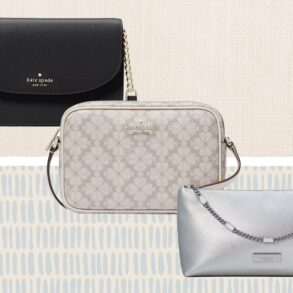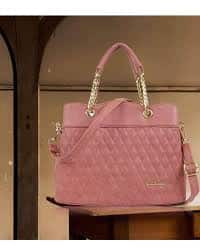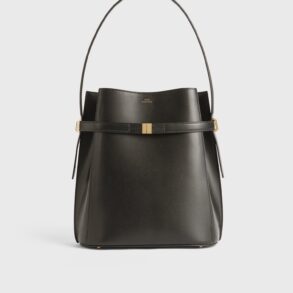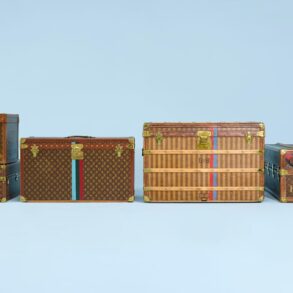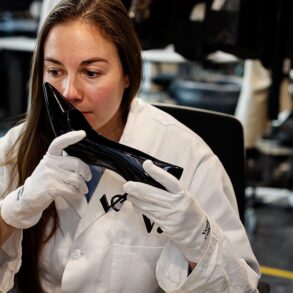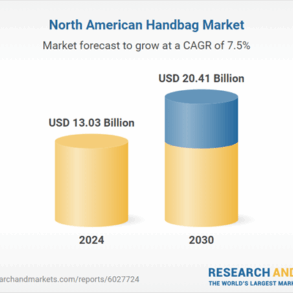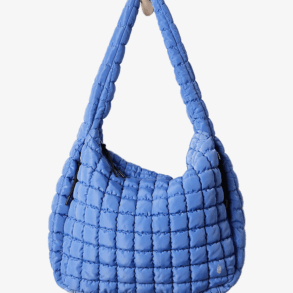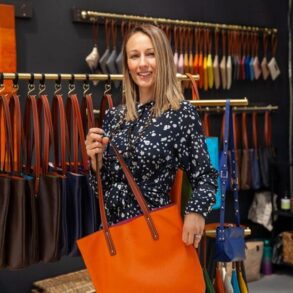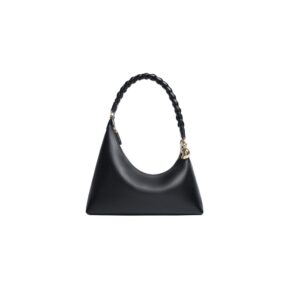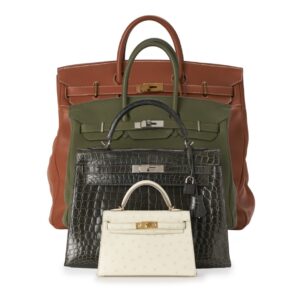Apr 30, 2025
IndexBox has just published a new report: Australia – Handbags – Market Analysis, Forecast, Size, Trends And Insights.
The demand for handbags in Australia is on the rise, with market performance expected to slow down but still increase at a steady rate. By 2035, the market volume is estimated to reach 30M units, while the market value is projected to reach $731M. Stay informed about the changing landscape of the handbag market in Australia.
Market Forecast
Driven by increasing demand for handbags in Australia, the market is expected to continue an upward consumption trend over the next decade. Market performance is forecast to decelerate, expanding with an anticipated CAGR of +1.4% for the period from 2024 to 2035, which is projected to bring the market volume to 30M units by the end of 2035.
In value terms, the market is forecast to increase with an anticipated CAGR of +2.5% for the period from 2024 to 2035, which is projected to bring the market value to $731M (in nominal wholesale prices) by the end of 2035.

Consumption
Australia’s Consumption of Handbags
In 2024, consumption of handbags increased by 6.5% to 26M units, rising for the fourth year in a row after two years of decline. Over the period under review, the total consumption indicated a prominent increase from 2013 to 2024: its volume increased at an average annual rate of +5.7% over the last eleven-year period. The trend pattern, however, indicated some noticeable fluctuations being recorded throughout the analyzed period. Based on 2024 figures, consumption increased by +86.2% against 2020 indices. Over the period under review, consumption attained the maximum volume in 2024 and is likely to continue growth in years to come.
The value of the handbag market in Australia declined to $555M in 2024, which is down by -5.4% against the previous year. This figure reflects the total revenues of producers and importers (excluding logistics costs, retail marketing costs, and retailers’ margins, which will be included in the final consumer price). Overall, consumption enjoyed a buoyant increase. Over the period under review, the market attained the peak level at $587M in 2023, and then declined in the following year.
Imports
Australia’s Imports of Handbags
In 2024, purchases abroad of handbags increased by 5.3% to 27M units, rising for the fourth year in a row after two years of decline. In general, total imports indicated a resilient expansion from 2013 to 2024: its volume increased at an average annual rate of +5.7% over the last eleven years. The trend pattern, however, indicated some noticeable fluctuations being recorded throughout the analyzed period. Based on 2024 figures, imports increased by +86.1% against 2020 indices. The most prominent rate of growth was recorded in 2021 with an increase of 40%. Imports peaked in 2024 and are expected to retain growth in the immediate term.
In value terms, handbag imports dropped to $566M in 2024. Overall, imports showed a buoyant expansion. The pace of growth was the most pronounced in 2021 with an increase of 24% against the previous year. Imports peaked at $679M in 2022; however, from 2023 to 2024, imports remained at a lower figure.
Imports By Country
In 2023, China (19M units) constituted the largest supplier of handbag to Australia, with a 76% share of total imports. Moreover, handbag imports from China exceeded the figures recorded by the second-largest supplier, India (4.3M units), fivefold. Vietnam (509K units) ranked third in terms of total imports with a 2% share.
From 2013 to 2023, the average annual rate of growth in terms of volume from China amounted to +5.0%. The remaining supplying countries recorded the following average annual rates of imports growth: India (+17.6% per year) and Vietnam (+18.5% per year).
In value terms, China ($117M) constituted the largest supplier of handbags to Australia, comprising 18% of total imports. The second position in the ranking was taken by India ($25M), with a 4% share of total imports. It was followed by Vietnam, with a 2.3% share.
From 2013 to 2023, the average annual rate of growth in terms of value from China was relatively modest. The remaining supplying countries recorded the following average annual rates of imports growth: India (+11.3% per year) and Vietnam (+15.5% per year).
Imports By Type
In 2024, handbags with outer surface of plastic sheeting or of textile materials (21M units) constituted the largest type of handbags supplied to Australia, with a 77% share of total imports. Moreover, handbags with outer surface of plastic sheeting or of textile materials exceeded the figures recorded for the second-largest type, handbags with outer surface of vulcanised fibre or of paperboard (4M units), fivefold.
From 2013 to 2024, the average annual growth rate of the volume of handbags with outer surface of plastic sheeting or of textile materials imports amounted to +5.5%. With regard to the other supplied products, the following average annual rates of growth were recorded: handbags with outer surface of vulcanised fibre or of paperboard (+14.1% per year) and handbags with outer surface of leather, composition leather, or patent leather (+3.8% per year).
In value terms, handbags with the largest imports in Australia were handbags with outer surface of leather, composition leather, or patent leather ($361M), handbags with outer surface of plastic sheeting or of textile materials ($214M) and handbags with outer surface of vulcanised fibre or of paperboard ($4.6M).
Among the main product categories, handbags with outer surface of vulcanised fibre or of paperboard, with a CAGR of +9.9%, recorded the highest rates of growth with regard to the value of imports, over the period under review, while purchases for the other products experienced more modest paces of growth.
Import Prices By Type
The average handbag import price stood at $21 per unit in 2024, reducing by -15% against the previous year. Over the period from 2013 to 2024, it increased at an average annual rate of +1.0%. The most prominent rate of growth was recorded in 2015 when the average import price increased by 30% against the previous year. Over the period under review, average import prices reached the maximum at $31 per unit in 2020; however, from 2021 to 2024, import prices stood at a somewhat lower figure.
Prices varied noticeably by the product type; the product with the highest price was handbags with outer surface of leather, composition leather, or patent leather ($145 per unit), while the price for handbags with outer surface of vulcanised fibre or of paperboard ($1.2 per unit) was amongst the lowest.
From 2013 to 2024, the most notable rate of growth in terms of prices was attained by handbags with outer surface of leather, composition leather, or patent leather (+3.4%), while the prices for the other products experienced mixed trend patterns.
Import Prices By Country
The average handbag import price stood at $25 per unit in 2023, dropping by -12.2% against the previous year. Over the last decade, it increased at an average annual rate of +2.8%. The most prominent rate of growth was recorded in 2015 when the average import price increased by 30% against the previous year. Over the period under review, average import prices reached the peak figure at $31 per unit in 2020; however, from 2021 to 2023, import prices stood at a somewhat lower figure.
There were significant differences in the average prices amongst the major supplying countries. In 2023, amid the top importers, the country with the highest price was Cambodia ($30 per unit), while the price for India ($5.8 per unit) was amongst the lowest.
From 2013 to 2023, the most notable rate of growth in terms of prices was attained by Cambodia (+13.0%), while the prices for the other major suppliers experienced a decline.
Exports
Australia’s Exports of Handbags
In 2024, overseas shipments of handbags decreased by -31.4% to 543K units, falling for the second year in a row after two years of growth. In general, exports, however, enjoyed a moderate increase. The pace of growth was the most pronounced in 2022 with an increase of 170%. As a result, the exports reached the peak of 1.8M units. From 2023 to 2024, the growth of the exports remained at a somewhat lower figure.
In value terms, handbag exports rose significantly to $45M in 2024. Overall, exports, however, posted resilient growth. The most prominent rate of growth was recorded in 2016 when exports increased by 74% against the previous year. Over the period under review, the exports reached the peak figure in 2024 and are likely to see gradual growth in the immediate term.
Exports By Country
New Zealand (517K units) was the main destination for handbag exports from Australia, with a 65% share of total exports. Moreover, handbag exports to New Zealand exceeded the volume sent to the second major destination, the United States (70K units), sevenfold. Singapore (46K units) ranked third in terms of total exports with a 5.9% share.
From 2013 to 2023, the average annual rate of growth in terms of volume to New Zealand stood at +6.8%. Exports to the other major destinations recorded the following average annual rates of exports growth: the United States (+16.0% per year) and Singapore (+25.7% per year).
In value terms, the largest markets for handbag exported from Australia were Singapore ($11M), New Zealand ($7.4M) and Hong Kong SAR ($6.9M), with a combined 62% share of total exports. Italy, the United States, Thailand, the UK, Japan, Fiji and Papua New Guinea lagged somewhat behind, together accounting for a further 19%.
In terms of the main countries of destination, Thailand, with a CAGR of +56.5%, recorded the highest growth rate of the value of exports, over the period under review, while shipments for the other leaders experienced more modest paces of growth.
Exports By Type
Handbags with outer surface of plastic sheeting or of textile materials (432K units) was the largest type of handbags exported from Australia, with a 61% share of total exports. Moreover, handbags with outer surface of plastic sheeting or of textile materials exceeded the volume of the second product type, handbags with outer surface of leather, composition leather, or patent leather (142K units), threefold.
From 2013 to 2024, the average annual growth rate of the volume of handbags with outer surface of plastic sheeting or of textile materials exports totaled +9.8%. With regard to the other exported products, the following average annual rates of growth were recorded: handbags with outer surface of leather, composition leather, or patent leather (+14.3% per year) and handbags with outer surface of vulcanised fibre or of paperboard (-1.7% per year).
In value terms, handbags with outer surface of leather, composition leather, or patent leather ($25M), handbags with outer surface of plastic sheeting or of textile materials ($14M) and handbags with outer surface of vulcanised fibre or of paperboard ($3.2M) constituted the most exported types of handbags from Australia worldwide.
Among the main product categories, handbags with outer surface of leather, composition leather, or patent leather, with a CAGR of +17.0%, saw the highest rates of growth with regard to the value of exports, over the period under review, while shipments for the other products experienced more modest paces of growth.
Export Prices By Type
The average handbag export price stood at $83 per unit in 2024, increasing by 59% against the previous year. Overall, the export price continues to indicate a remarkable increase. The most prominent rate of growth was recorded in 2020 when the average export price increased by 269%. As a result, the export price attained the peak level of $84 per unit. From 2021 to 2024, the average export prices remained at a somewhat lower figure.
There were significant differences in the average prices for the major types of exported product. In 2024, the product with the highest price was handbags with outer surface of leather, composition leather, or patent leather ($178 per unit), while the average price for exports of handbags with outer surface of vulcanised fibre or of paperboard ($24 per unit) was amongst the lowest.
From 2013 to 2024, the most notable rate of growth in terms of prices was recorded for the following types: handbags with outer surface of vulcanised fibre or of paperboard (+11.4%), while the prices for the other products experienced more modest paces of growth.
Export Prices By Country
In 2023, the average handbag export price amounted to $52 per unit, surging by 140% against the previous year. In general, the export price recorded a strong increase. The most prominent rate of growth was recorded in 2020 an increase of 269% against the previous year. As a result, the export price reached the peak level of $84 per unit. From 2021 to 2023, the average export prices remained at a lower figure.
Prices varied noticeably by country of destination: amid the top suppliers, the country with the highest price was Hong Kong SAR ($350 per unit), while the average price for exports to Papua New Guinea ($10 per unit) was amongst the lowest.
From 2013 to 2023, the most notable rate of growth in terms of prices was recorded for supplies to Japan (+12.3%), while the prices for the other major destinations experienced more modest paces of growth.
Source: IndexBox Market Intelligence Platform
This post was originally published on this site be sure to check out more of their content.






